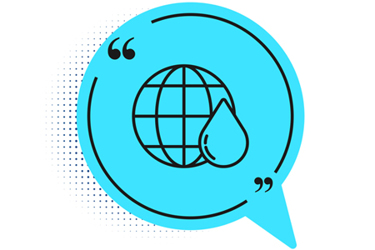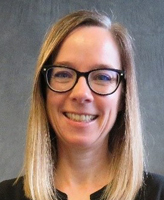How To Address Your (Water) Sensitivity

By Kevin Westerling,
@KevinOnWater

As I monitor the daily flow (pardon the pun) of water-industry news, product launches, and initiatives for special coverage on Water Online and in Water Innovations, a basic investigative question is “Who is this intended for?” When the opportunity arose to interview Gemma Dunn, the integrated water management service line coordinator with GHD North America, about GHD’s new Water Sensitive Cities Index, I soon came to a new question:
What city isn’t water sensitive?
If water scarcity isn’t an issue, due to drought, population growth, and overdrawing or contamination of source water, then flooding and sewer overflow — the result of old infrastructure and increasingly frequent extreme weather events — are likely concerns. In the U.S., at least, you would be in the minority if you are not experiencing one or the other, and sometimes both (see Texas). Elsewhere, cities and communities of all types are dealing with the degradation of once-reliable resources — the result of saltwater intrusion or Per- and polyfluoroalkyl substances (PFAS) contamination in groundwater, for instance — as yet another threat. And considering the importance of water for both individual and community survival, every city should be water sensitive in terms of prioritizing this precious resource and safeguarding future supply, even if these stressors aren’t impacting current operations. When Benjamin Franklin stated, “When the well’s dry, we know the worth of water,” it was actually a lesson on preparedness — a plea to address a potential crisis before it happens.
These days, Gemma Dunn is spearheading efforts to make sure the well never runs dry. With 20 years’ experience in water management at GHD, a PhD with the Cooperative Research Centre for Water Sensitive Cities in Melbourne, Australia, and a decade-long focus on integrated water management and One Water approaches, she is well equipped to do so.
A frequent advisor to government agencies, NGOs, and corporations, Gemma is known for her extensive work on the development and use of indicators and assessment frameworks, including the recently launched Water Sensitive Cities Index. She shares her insight on the index, as well as the underlying issues it addresses, in the Q&A below.
What is the Water Sensitive Cities Index, how was it formed, and what is it meant to achieve?

Developed over two years by the Australian Cooperative Research Centre for Water Sensitive Cities (CRCWSC), the Water Sensitive Cities Index has undergone significant industry testing to ensure it is relevant, robust, functional, and reliable. To date, it has been applied in more than 50 communities and is designed to benchmark communities against a range of indicators characterizing One Water goals: Ensure good water-sensitive or One Water governance, increase community capital, achieve equity of essential services, improve productivity and resource efficiency, improve ecological health, provide quality urban design, and promote adaptive infrastructure.
There are multiple characteristics and benefits of using the index to move toward your One Water goals:
- Robust and independent — scientifically developed by an independent organization based on an analysis of over 50 indexes/indicators;
- Generates alignment — gets people on the same page in understanding what the characteristics of One Water are and what aspiration we are working toward;
- Cost-effective — prioritizes areas for deeper investigation or investment — without having to spend hundreds of thousands on additional studies — and leverages the shared knowledge of a range of organizations;
- Relevant — developed specifically to meet the needs of industry and has been applied in more than 50 communities around the world.
How did you determine the need for the index in the U.S. in terms of vulnerability, preparedness, and worsening environmental conditions?
Like many countries around the world, the U.S. is vulnerable to the impacts of climate change and worsening environmental conditions. In recent years, we have witnessed an increase in the occurrence and severity of floods, droughts, wildfires, winter storms, and heat waves. Many communities across North America are declaring climate emergencies and discussing a myriad of complex issues, such as equity.
Failure to evaluate vulnerability, and make adequate preparation, can result in an increased risk of loss of life, property damage, environmental damage, and significant financial loss. Community preparedness (preparation and planning) can increase our ability to respond efficiently and effectively and to increase resilience. The index helps frame this discussion with indicators such as equitable access to flood protection and robust infrastructure.
There is a growing interest in One Water approaches — initiatives from the US Water Alliance, for example — to respond to the myriad of challenges facing the sector, and the index is really at the vanguard of this movement. The index facilitates the conversations and generates alignment. It helps get people onto the same page in understanding what the characteristics are and what aspiration we are working toward.
How can this information be integrated into smart-water and smart-city platforms as the industry undergoes digitalization?
Within the index, there are indicators to examine digital intelligence systems and optimization of water system network performance using a smart-city approach. Also, the index platform is web-based and enables the visualization of results for policy makers, service providers, and the community.
A smart-city approach is important but does not guarantee system resilience by itself. Digital solutions are just one element within a broader context. The index helps identify where to focus the implementation of digital solutions to track and gain an improved understanding of regional challenges.
What are the costs of ignoring environmental trends and warning signs, or staying status quo?
There is a misunderstanding that the status quo (or inaction) does not cost anything. Populations are growing, our infrastructure is aging, there are maintenance backlogs and rising systems costs, and communities worldwide have degraded watersheds. The American Society of Civil Engineers (ASCE) recently estimated every household in the U.S. pays a hidden tax of $3,300 a year due to poor infrastructure. Climate change exacerbates these already difficult challenges.
We often talk about climate change in terms of greenhouse gas emissions, but we experience climate change primarily through water (from too much to not enough). The majority of natural disasters (over 90 percent) are water-related, with significant impacts on people and the economy. We must take action.
Change is hard. Existing structures and processes tend to often reinforce the status quo. Decision-makers need support in guiding and motivating change. The index is a tool to enable decision-makers to use the information to drive change.
How can utilities that are struggling financially make the necessary resiliency improvements?
According to the Insurance Bureau of Canada, “Studies have shown that investments in resilient infrastructure have a return on investment of $6 in future averted losses for every $1 spent proactively. ...”
Decision-makers urgently need robust tools to help them prioritize action, maximize investments, and enable more effective collaboration within organizations and across institutions to make the best use of limited financial resources. The index can provide a forum or initiate collaborations with the broader sector or industry to form the first step in identifying better solutions (such as multibenefit projects) and/or funding mechanisms that address funding constraints.
How can the engineering community continue to promote resiliency and influence action?
Primarily, there must be recognition that climate change is occurring; our communities face significant costs and decisions. The scientific and engineering community has a duty to lead this conversation and work together more effectively to advocate for change.
At GHD, we recognize how challenging it is for communities to take swift action in light of these complex challenges and future uncertainty. Water literacy is an indicator in the index. I would argue that we (the engineering and scientific community) have not done enough to highlight the true value of water and how this links to the level of service. We need to get better at communicating the linkages between the desired level of service with the true cost of providing water services and the cost of changing climate and resiliency. The index is the first step in navigating this discussion.
